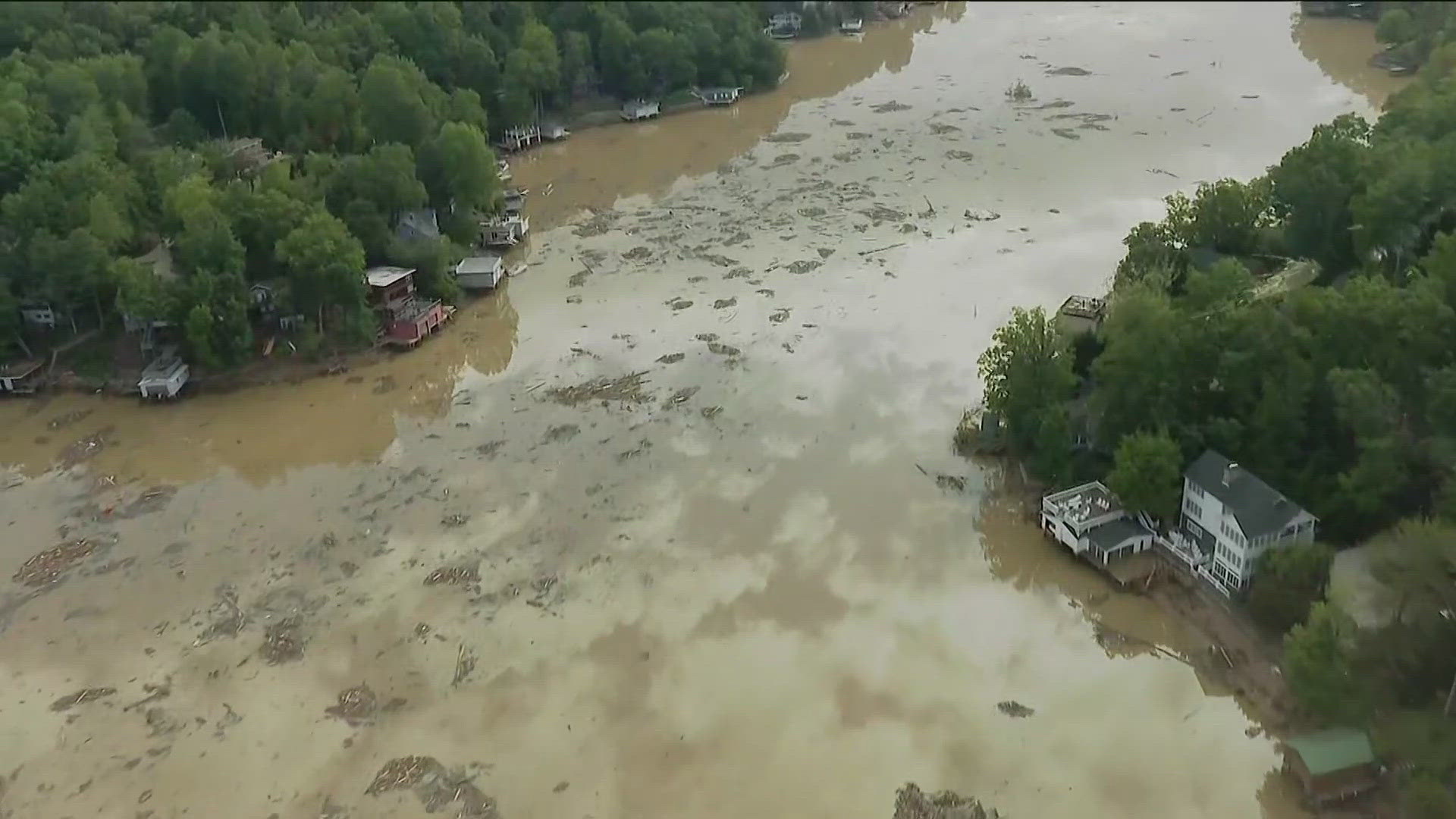SWANNANOA, N.C. — Many residents of the Carolinas still lacked running water, cellphone service and electricity Wednesday as rescuers searched for people unaccounted for after Hurricane Helene caused catastrophic damage across the Southeast and killed at least 166 people.
President Joe Biden will survey the devastation in the two states as floodwaters receded and revealed more of the death and destruction left in Helene’s path.
More than 1.2 million customers still had no power Wednesday in the Carolinas and Georgia, where Helene tore far inland after initial landfall on Florida's Gulf Coast. Some residents cooked food on charcoal grills or hiked to high ground in the hopes of finding a signal to let loved ones know they are alive.
“We have to jump-start this recovery process,” Biden said Tuesday, estimating it will cost billions. “People are scared to death. This is urgent.”
While Biden is in the Carolinas, Vice President Kamala Harris will be in neighboring Georgia.
In small Swannanoa, outside Asheville, receding floodwaters revealed cars stacked on top of others and mobile homes that had floated away. Sinkholes pockmarked roads caked with mud and debris.
Cliff Stewart survived 2 feet of water that poured into his home, topping the wheels on his wheelchair and sending his medicine bottles floating. Left without electricity and reliant on food drop-offs from friends, he has refused offers to help him leave.
“Where am I going to go?” the Marine Corps veteran said. “This is all I’ve got. I just don’t want to give it up, because what am I going to do? Be homeless? I’d rather die right here than live homeless.”
More than 150,000 households have registered for assistance with the Federal Emergency Management Agency, and that number is expected to rise rapidly in the coming days, said Frank Matranga, an agency representative.
Nearly 2 million ready-to-eat meals and more than a million liters of water have been sent to the hardest-hit areas, he said.
The storm unleashed the worst flooding in a century in North Carolina, dumping more than 2 feet (61 centimeters) of rain in places.
The administration of Gov. Roy Cooper said Tuesday that more than two dozen water plants remained closed. Active-duty U.S. military units may be needed to assist the long-term recovery, he said, adding that Biden had given “the green light” to mobilizing military assets soon.
A section of one of the region’s main arteries, Interstate 40, reopened Tuesday after a mudslide was cleared, but a collapsed stretch near North Carolina’s border with Tennessee remained closed.
The widespread damage and outages affecting communications infrastructure left many people without stable access to the internet and cell service.
“People are walking the streets of Canton with their phones up in the air trying to catch a cellphone signal like it’s a butterfly,” said Mayor Zeb Smathers, of Canton, North Carolina. “Every single aspect of this response has been extremely crippled by lack of cellphone communication. The one time we absolutely needed our cellphones to work they failed.”
Teams from Verizon worked to repair toppled cell towers and damaged cables and to provide alternative forms of connectivity, the company said in a statement.
AT&T said it launched “one of the largest mobilizations of our disaster recovery assets for emergency connectivity support.”
The efforts to restore service was made more challenging by the region’s terrain and spread-out population, said David Zumwalt, president and CEO of the Association for Broadband Without Boundaries.

